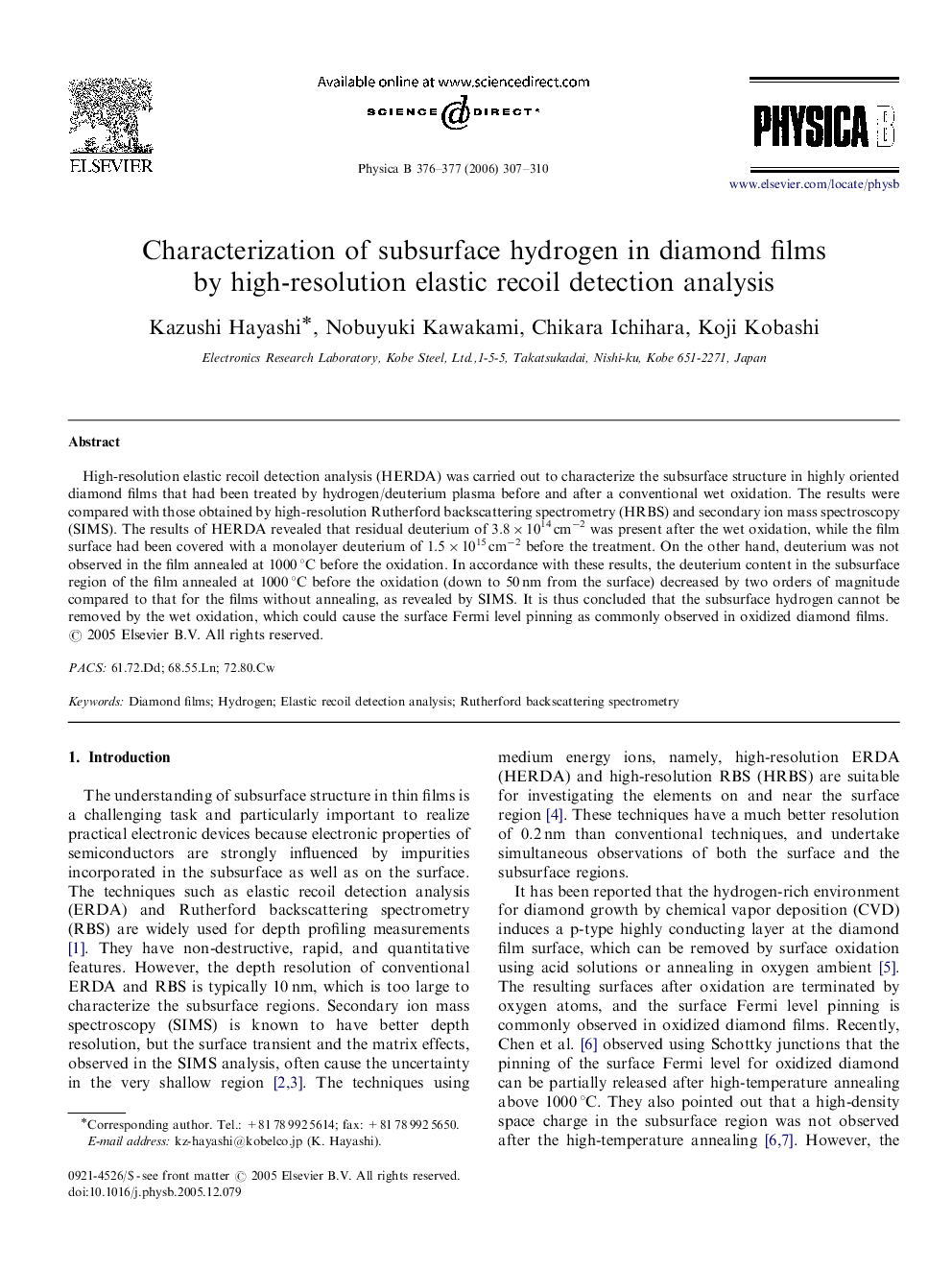| Article ID | Journal | Published Year | Pages | File Type |
|---|---|---|---|---|
| 1816710 | Physica B: Condensed Matter | 2006 | 4 Pages |
High-resolution elastic recoil detection analysis (HERDA) was carried out to characterize the subsurface structure in highly oriented diamond films that had been treated by hydrogen/deuterium plasma before and after a conventional wet oxidation. The results were compared with those obtained by high-resolution Rutherford backscattering spectrometry (HRBS) and secondary ion mass spectroscopy (SIMS). The results of HERDA revealed that residual deuterium of 3.8×1014 cm−2 was present after the wet oxidation, while the film surface had been covered with a monolayer deuterium of 1.5×1015 cm−2 before the treatment. On the other hand, deuterium was not observed in the film annealed at 1000 °C before the oxidation. In accordance with these results, the deuterium content in the subsurface region of the film annealed at 1000 °C before the oxidation (down to 50 nm from the surface) decreased by two orders of magnitude compared to that for the films without annealing, as revealed by SIMS. It is thus concluded that the subsurface hydrogen cannot be removed by the wet oxidation, which could cause the surface Fermi level pinning as commonly observed in oxidized diamond films.
